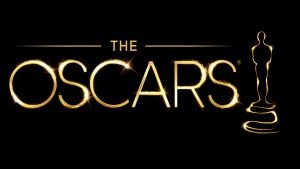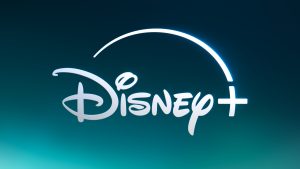The treasured tradition that includes Snow White and the Seven Dwarfs, The Little Mermaid and The Lion King was eclipsed at the box office and in the hearts of moviegoers by the arrival of digital-age dazzlers Shrek and Ice Age, done by rivals.
Out went the pencils. In came the pixels. The House of Mouse, which invented the art of feature animation, was left to follow the lead of other studios. It began to shift gears in 2003, concentrating on modestly successful yet somewhat generic computerized fare such as this year's Meet the Robinsons.
Turns out that reports of 2-D's demise were greatly exaggerated. Like Princess Aurora in Sleeping Beauty, it simply fell into a slumber, only to be reawakened by a prince in a loud Hawaiian shirt. Namely, the main brain behind Pixar's streak of 3-D hits, John Lasseter.
When Disney acquired the company behind such successes asThe Incredibles and Monsters, Inc. last year, Lasseter was made chief creative officer of the studio's feature animation division. Topping the to-do list of the ToyStory and Carsdirector, whose career choice was inspired by a deep passion for all things Disney, was to resuscitate the Magic Kingdom's much-abused 2-D legacy.
The comeback begins Nov. 21 with Disney's return to the land of traditional make-believe in Enchanted, a long-planned mix of live action and animation.
"Supposedly, people weren't interested in watching hand-drawn animation as much as computerized animation," says Lasseter, weeks after announcing work had begun on The Princess and the Frog. Due in 2009, it's Disney's first true 2-D fairy tale since 1991's Beauty and the Beast. "But what people weren't interested in was watching bad movies. It's as (Finding Nemo director) Andrew Stanton said: 2-D became a scapegoat for bad storytelling."
Instead, "it's all what you do with the medium. And the studio that should be doing 2-D is the studio that started it all."
Disney studio chairman Richard Cook agrees: "There was always a feeling at some point everything old would become new again. In fact, there would be all forms of animation back in the forefront. Hand-drawn, CG, stop-motion. John is clearly looking at fitting the best stories in the best way with the proper medium."
Lasseter also is in the midst of transferring Pixar's exacting standards, influenced by Walt Disney's own approach, back to their source.
As Leonard Maltin, author of Of Mice and Magic: A History of American Animated Cartoons, notes, "John has said from the get-go that Pixar films are about storytelling and character. In this he follows the classic Disney template. The medium is not the message, but a tool to tell the story. He might use a cutting-edge tool, but he and his colleagues redefine their visual vocabulary every time they tackle a new subject matter."
Too many cute talking animals
The news about The Princess and the Frog, delivered at the company's annual meeting in March, instantly created a stir over its lead character, Tiana, a chambermaid in jazz-era New Orleans and Disney's first black cartoon princess.
But her film also is being cheered for a different kind of diversity. Just as audiences grew tired of increasingly formulaic tune-filled Disney 'toons after the triumph of The Lion King in 1994, they have been less enthused about computer animation following last year's glut of 14 or so releases, most of which starred cute talking animals.
The Wild. Over the Hedge. Open Season. Just how many chatty hyper-realistic creatures can one tolerate in a single year? Not that many, judging by a jokey initial trailer for a film due July 27 that showcases everyone's favorite canary-yellow cartoon clan.
As a sweet 3-D bunny prances in a daisy-dappled field, a voice intones: "In a time when computer animation brings us worlds of unsurpassed beauty, one movie dares to be ugly." BOOM! The fuzzy-wuzzy is squashed as Moe the bartender proudly declares, "The Simpsons Movie. In 2-D."
Obviously, the creator of the longest-running animated series on American TV, Matt Groening, stands by his show's crudely drawn style. "Visually perfect is not compelling," he says. "Maybe I'm just an old crank talking, but part of the appeal of animation is the flourish of the human hand."
Groening also finds CG can be a real pain. "Maybe it's because of my age, but 3-D animation tires my eyes. It's the level of detail and the focus it requires."
The 2-D revival happily coincides with Enchanted's arrival this year. Because Disney's unit was dismantled by the time the script was in place, the work was done by a small outside company started in 2005 by James Baxter. The animator witnessed the medium's decline while working at both Disney (Belle in Beauty and the Beast) and DreamWorks (Moses in The Prince of Egypt) before briefly switching to CG (Shrek 2, Madagascar).
Enchanted is sprinkled with 14 minutes of hand-drawn romantic adventures that pay humorous tribute to the likes of Snow White and Cinderella. The story of a cartoon princess who is banished to Manhattan and must cope with the realities of urban life might remind audiences how much they have missed Disney fables of yore. "We are tweaking clichés, but it's done with a lot of love," Baxter says.
Says Enchanted director Kevin Lima, the Disney animation grad (Tarzan) who had moved on to live action until now, "Artists are so thrilled that this film just appeared after Disney said, 'No more 2-D.' Why abandon an art form?"
Andreas Deja, one of Disney's modern legends who contributed to Enchanted, tried to adapt to 3-D during the changeover. He was even put in charge of a task close to sacrilege: turning Mickey Mouse into a CG rodent for the 2004 straight-to-DVD sequel Twice Upon a Christmas. "It is difficult to get the same charm and liveliness," he says. "He works best as a drawing."
Deja, the talent behind such 2-D characters as Scar in The Lion King and Lilo in Lilo & Stitch, considers the return of hand-drawn animation as "overdue."
"Things are looking up," says the artist, who finds computers tend to depersonalize the process. "I tried to adapt to 3-D, and it didn't take long to learn. But if you are a good draftsman, you can express yourself in your drawings on screen."
He is working on another of Lasseter's pet 2-D projects: the return of animated shorts that will run before theatrical features. He's in the midst of finishing How to Hook Up Your Home Theater with Goofy once again a bumbling tutor.
Much like Uncle Walt, Lasseter believes a director's vision is the key to superior animation. So he wooed Ron Clements and John Musker, the writing/directing dream team behind the 1989 hit that kicked off Disney's last 2-D golden age, The Little Mermaid, to oversee The Princess and the Frog.
The pair left after their Treasure Planet crashed in 2002, but their homecoming is a hopeful sign.
Before 2-D regains its status, questions remain. Do Clements and Musker still have what it takes to update an old art form? Will the studio phase out 3-D to concentrate on hand-drawn cartoons? Will other ex-Disney stalwarts return?
"We all grew up on Disney classic animation," Lima says. "Even if you have grown out of it, it is still within you. To have it go away is painful. But to have it return is like an old friend, coming to sit on the couch next to you."





